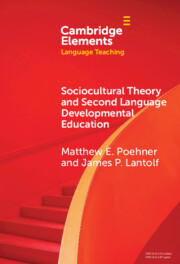Element contents
Sociocultural Theory and Second Language Developmental Education
Published online by Cambridge University Press: 21 May 2024
Summary
Keywords
- Type
- Element
- Information
- Series: Elements in Language TeachingOnline ISBN: 9781009189422Publisher: Cambridge University PressPrint publication: 06 June 2024



